Looking at Knit – using different lengths and thicknesses of yarn to represent data.
The piece below acted as a starting point for to build from when developing my final pieces. Having taken inspiration from my artist research of Annie Albers Weave, i wanted to see how I could potentially use my data to drive my knit samples to, alike to my weave samples. I considered the use of yarn and the thickness too, as well as what the number of rows could determine or whether the stitch was knit or pearl. Firstly I started with a thinner, golden thread, which ended up acting as a border to the start or top of the piece. You can see as the piece went on, my knit got worse, but I think the fact I was alternating between two yarns was a struggling aspect of the piece. To begin with a then changed to this acrylic mix, yellow wool, and knitted 9 rows to align with my data looking at people’s views of mental wellbeing over lockdown. Then I decided to add a pearl in, just as an experiment, which later I figured this could be useful in determining a length of time, a place of which data was collected or a change in the number or trends.
By alternating the yarn, the knit revealed holes and spaces which I thought resembled this idea of ‘gaps in the data’ or missing parts which I think also reflected this idea of mental health and lockdown nicely. I see this piece also as very crag like. The top to me resembles the top of Arthurs Seat, of the piece of land next to it – the Crags, which reinforced this idea of outdoor activity, which I had also included in my data and networking research.Despite being a little patching in places, this piece got me thinking more about using crochet as a form of stitch, by stitching pieces of knit or crochet together and even with machine and hand embroidery for hybrid samples.

My first hybrid sample was representing the amount of COVID cases across Wales, England, Scotland and Northern Ireland contrasted with the levels of activity over lockdown. The ruffled, synthetic material represents the cold, hard facts of the COVID pandemic – the case numbers across the UK. Although these trends are hidden slightly, deliberately overshadowed by the more positive data I wanted to show. The blue and white weave rows indicate the amount of people who did or did not believe that they gained a better understanding of physical activity and mental wellbeing over lockdown. The blue represented those that did believe they gained a better understanding of maintaining a healthy lifestyle, which is something i really wanted to emphasise in this piece when showing my data. Given that the pandemic has had us all in lockdown, for many this would have been a chance to reflect and consider the future. I felt it was important to try and represent this alongside COVID cases which had become more controlled since April, to show an interesting comparison.


My next sample was inspired by the colours and textures of outdoor spaces around Edinburgh. The piece itself represents the number of people who believed that they did not feel they suffered from mental health issues such as anxiety and depression, as a result of lockdown. I wanted therefore to make this piece seem more earthy, natural and grounded, trying to draw a comparison to a state of stability and calm which some managed to adopt during lockdown. I have used embroidery, machine embroidery, mola work, dissolvable fabric, crochet and knit to create this sample, which I did in the hope to create a piece resembling connection, just how all these different elements and techniques are connected in some way. Had I had more time, I would have liked to have experimented with using natural dying to dye my own yearns and hemp fabric to further add to this piece, but overall I am still happy with this piece and its intention as a sample.






In my final sample, I have used machine embroidery and fabric manipulation, through the use of elastic, to create this twisting and contorted piece. Taking inspiration from Iris Van Herpen, I wanted to try and represent trends in graphed data in a similar way. Taking inspiration from the stony Crags of Arthur’s Seat, i looked at how I could use the gold contrasting thread to add an element of confusion to the piece. The length of elastic sewn in then ruffled the fabric to create this undulating effect, which I then enhanced with the gold thread, to highlight the bigger ruffles or peaks and troughs of the fabric, much like in a graph. Although unclear, each length was measured to match the data of a graph representing COVID cases since April. Despite coming from quite a linear format of data as in a graph, I like how by using elastic and fabric manipulation, the data is unrecognisable and almost incomprehensible. this draws a nice comparison to the confusion of lockdown and therefore the importance of mental wellbeing in times of confusion.





Overall, I feel that this project has enabled me to fully explore and develop my skills working with new techniques and material structures. I enjoyed challenging the meaning of what a fabric structure could be and exploring how a technique done in a certain way can represent different things, creating meaning through textile art. I hoped to be able to further this connection to strengthen meaning in my work by doing some natural dyeing, which despite researching, I was unable to get to the dye lad soon enough to include in this project. However, I do still feel that I have gained a greater awareness of the importance of thinking mindfully about the textiles and materials that we are using, and to reconsider our choices when purchasing new fabric and yarns. I feel as though my understanding of how to represent data in textiles has developed greatly from week 1 to now. Due to the experimental nature of the project, I found myself looking to artists research naturally and looking for alternative ways of trying things out in my own time. I would have liked to have explored more of the crochet and knit side, being something that I was introduced to in this project, and how these techniques could combine to form a new material structure. Moving on from week 2, practising weave encouraged me to look further at ways of showing data. Looking at Annie Albers work, I understood better how to form structure in weave, creating pattern and showing data in a meaningful way. This is something I feel has been really beneficial within this project, allowing us to develop ideas and experiment with new and different techniques.

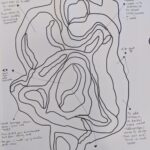
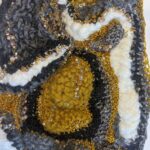
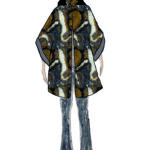
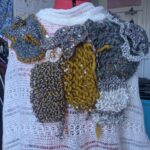
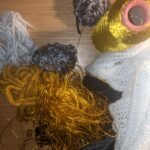

Briana Brennan
14 October 2020 — 6:06 pm
Love these! X
s1935090
15 October 2020 — 9:47 am
Thank you!